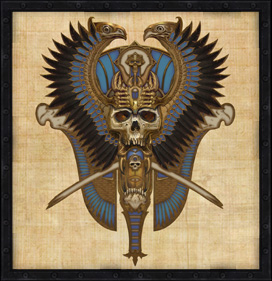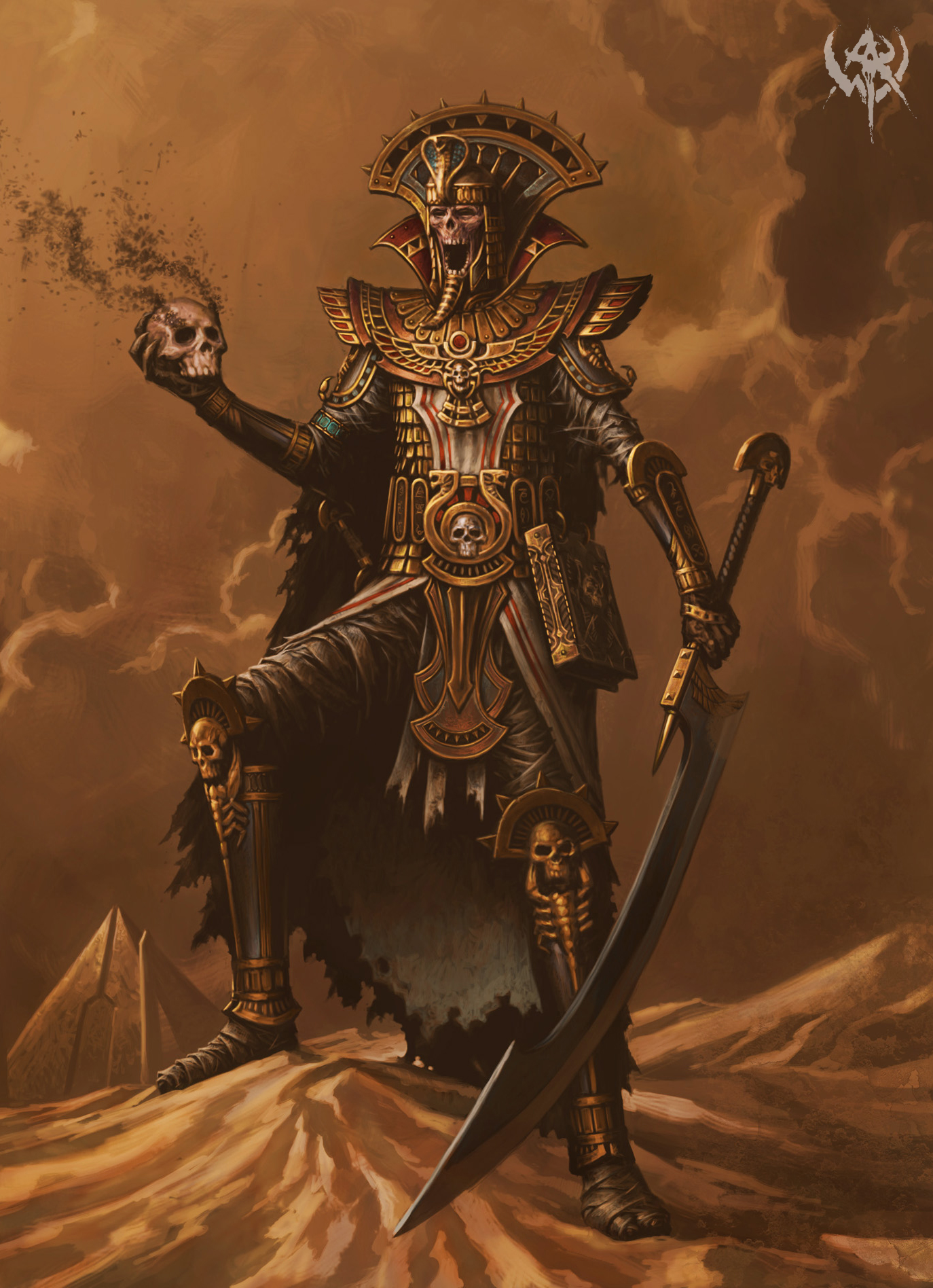Tactica Tomb Kings: Welcome to the Land of the Dead
This is designed to be a tactica for the new Tomb Kings (TK) book and will try to give a sense of the general theme of the army and some rough overall advice. I then intend to go through it unit by unit followed by some tricks and strategies as well as pitfalls to watch out for. Note that this is not a comparison between the old book and new book since that is a useless endeavor and people have probably already forgotten the old rules. There are obviously many different ways to play a given army and while these are my opinions (based on personal experience and discussion with other TK and fantasy players), they are in no way the only way to do things and you should always try things out for yourself to see what works for you and what you like. And if you disagree with me on any of these points, feel free to bring it up with me, you can find me over at the great Tomb Kings forum, Tomb-Kings.net.

General army notes:
The overall theme of the army is consistency -- a slow, unstoppable force coming to add you to the ranks. They have many rules that all turn them into one of the most reliable armies in the game, if you use their abilities to your advantage. The special rules for shooting, marching, crumbling, unbreakable, etc all mean that the army will operate the same way in any given situation and isn't subject to crazy dice rolls completely messing up your plans (at least less so than most). So one very nice thing about the army is that you can often know how the army will perform when put in a specific situation, which can't be said of most of the armies out there. This can be used for tactical gain during a game with a bit of forethought. Here I will go over a few of those situations and talk about the army-wide rules that really make TK the unique army that they are.
Seeing as TK have rather different army-wide special rules than most, there are some things to keep in mind for all of your TK units:
Being undead (meaning you must always hold a charge, are unbreakable, and crumble from combat res) is a big deal for the army and changes the way you have to assess different situations. Since you must hold and you won't be running away, you know that when you put a unit forward, unless its wiped out, it will stay there regardless of what's going on around. This can be very helpful since it means you don't need to worry about your battle line undulating forwards and back based on how the game is going, with panic tests and such. But, keep in mind that you must be sure you want to move a given unit forward since they won't be able to flee from a bad charge. So, how to utilize this? Well if you need to use delay tactics on your enemy, you can use units of small horse archers or carrion and not worry about them being panicked by bowfire. Or, you can advance your battle line together without worrying about having holes punched through unless the entire unit is destroyed (part of the reason why robust units are good for TK).
The fact they they crumble from combat res is also a big game changer. This can be a curse or a blessing but it is always consistent which is nice. Rather than worrying about the possibility of your unit breaking and weighing the odds of that, there are times when you can know what the absolute worst case scenario will be. Since you crumble based on CR, you can know how much you would crumble by in the worst case -- count the number of wounds your opponent could possibly do (as in if they hit with all, wounded with those, and killed with all of those). Then assume you don't do any wounds in return. Count of the ranks and other static CR in the combat and you will know exactly how many casualties you would take in the worst case scenario. You can safely assume to lose less than that, but doing these kind of rough calculations will give you a sense of where you will stand if a given combat doesn't go your way. Keep in mind that this is really most effective in situations where you expect to lose combat. in situations where you are trying to win combat, this won't help as much. What's nice about this is that it allows you to go into combats with greater certainty as to how things will play out. Knowing you are going to lose the combat isn't bad if you also know that it will take roughly two rounds of combat to do so and that the enemy unit is stuck there until then. This way you can actually make plans based on that and not worry about a fluke break test ruining your day. So rather than get frustrated at lack of steadfast, take comfort in the hard math you can do to calculate how long a unit will last and plan accordingly.

The other important impact that crumbling has is that it means you don't get the benefits of steadfast. Now many TK players may balk at that, but I think it can be used to our advantage more often than not. Since ranks do very little for us (other than the extra bit of combat res), engaging in combats where both units lose their ranks (rivers, forests, etc) is hugely beneficial to us since we suffer almost nothing and our enemy loses a huge advantage. So load up on forests and put them smack in the middle of the table!
Along with not losing steadfast from losing ranks, the other benefit terrain has for us is that we don't suffer modifiers to hit when shooting, so cover (like from forests) makes no difference to us. I will talk in more detail on shooting when talking about the various ranged units, but the fact that TK don't suffer any modifiers helps when deciding on targets to shoot at since it means you can choose whatever is the best target to shoot regardless of modifiers. I'm not sure why, but there seems to be a sense when choosing targets that big, beefy blocks are better targets. Maybe it's because they are easy to hit and get some kills on and look scary across the table. This is usually not a great idea, but especially for TK since there is zero difference on whether you hit some frail, expensive, hard hitting skirmishers in a building as opposed to the massive block of cheap troops right next to them (except that taking out 3 out of 5 skirmishers is much better than 3 out of 40 infantry). So when playing TK, target priority is an important thing to keep in mind and again, use terrain to your advantage here.
One other element to TK is the lack of marching. While this might seem to be debilitating at first, I've found that it's not necessarily as bad as all that. We actually have plenty of resources available to make our enemy move as slowly as us. One of the big ones? You guessed it...terrain. Since we can't march anyways, might as well put a river or forest in the way, it will only slow the enemy down and let us maneuver a bit. We also have magic to help with this but I will talk about that when I dicuss the spells we can use.
So those are some of the army-wide rules to keep in mind when playing TK. Next I will be doing unit by unit reviews and start combining some of the nice units we have with some of the nice army specific rules we have.

